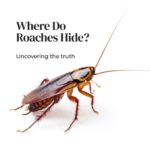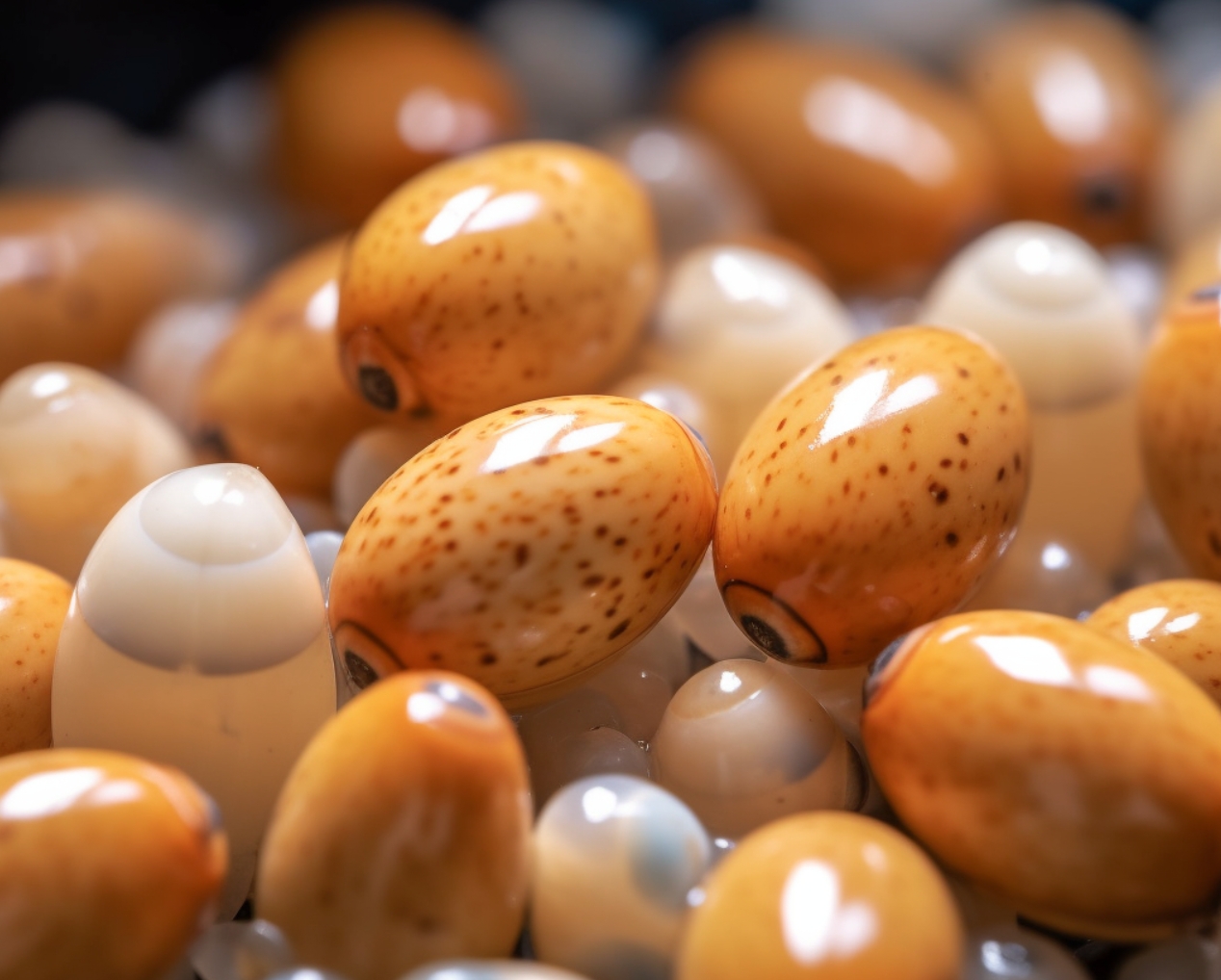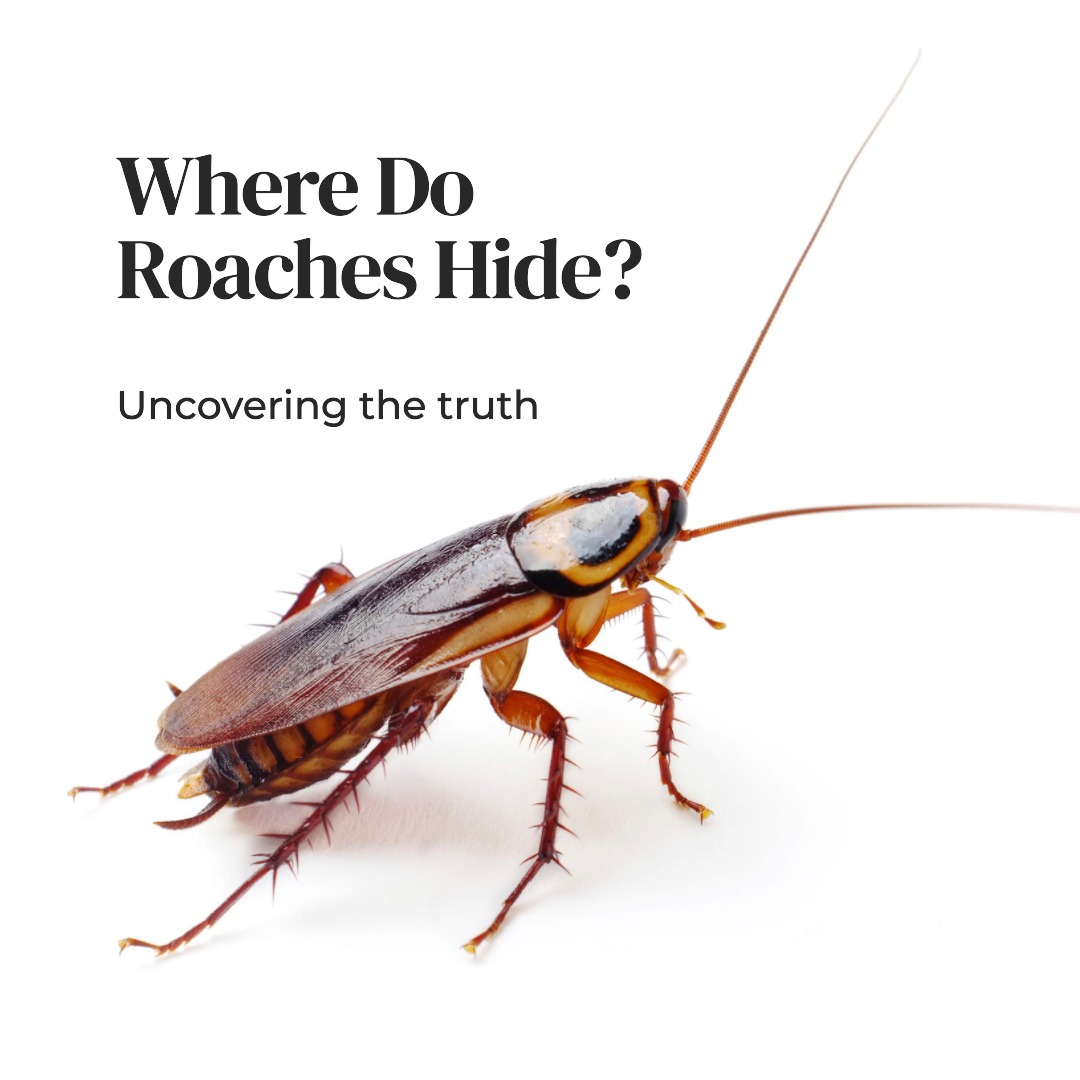Ever wake up in the middle of the night to a creepy-crawly sensation? Or spot an uninvited guest scurrying across your kitchen floor? Water bugs and roaches – two prime suspects that have tormented homeowners for eons. Yet, the confusion between them is as old as the pests themselves. Are they twins separated at birth or distant relatives? It’s time we separate fact from fiction and give you a step-by-step guide to identifying, preventing, and eliminating these notorious intruders from your castle.
Cockroach
Contents
Meet our not-so-welcome acquaintance, the Common Cockroach – the protagonist of our many household nightmares. You’d recognize this character from its brown cloak, round body, and wings that whisper tales of its escapades in the dark. Standing smaller than its water bug counterpart, it thrives in a world quite distinct. Let’s unravel the life and times of this little creature.
Size – The Miniature Marauder
Ranging from 1 to 1 1/2 inches, this tiny terror might fit in the palm of your hand – not that you’d want it there. Yet, for something so small, it leaves a pretty big impression, wouldn’t you agree?
Habitat – The Landlubber’s Lair
While some roach species might enjoy a dip, they’re mostly land-loving creatures. Think of them as backpackers, journeying across diverse landscapes rather than spending time at the beach. But don’t let this mislead you; they can swim when they need to.
Eating Habits – The Scavenging Scoundrel
What’s the cockroach’s secret to survival across ages? It’s an expert scavenger, as choosy about its food as a raccoon rummaging through a garbage can. They don’t hunt; they feast on our leftovers, transforming our waste into their banquet.
Temperament – The Shy Survivor
Is it surprising that a creature that sneaks around in the dark, often out of sight, is actually shy? Cockroaches might be household invaders, but they’re more scared of you than you are of them. Bright lights? An approaching human? They’ll scamper away faster than you can say ‘cockroach’.
Pest Determination – The Unwanted Houseguest
Don’t let the cockroach’s diminutive size fool you – it’s a genuine pest. They carry a whole suitcase of health concerns, making unwelcome deposits wherever they go. They’re like that houseguest who overstays their welcome and leaves a mess behind.
Here’s a snapshot of the cockroach’s profile:
| Characteristic | Common Cockroach |
|---|---|
| Size | 1 – 1 1/2″ |
| Habitat | Prefer land but can survive in water |
| Eating habits | Scavengers; not picky |
| Temperament | Shy and evasive |
| Pest determination | True pests; carry health concerns |
Water Bug
Deep in the freshwater realms dwells an elusive creature, the Water Bug. Its life is a fascinating underwater saga – it’s more Aquaman than Batman, prefers the company of aquatic companions, and makes rare appearances in our homes. Let’s dive into the depths of its life.
Size – The Two-Inch Titan
Don’t let its name fool you; our Water Bug is no tiny droplet. Measuring about two inches in length, this aquatic dweller is generally larger than our household roach.
Habitat – The Underwater Utopia
Water Bug – the name says it all. These creatures love nothing more than the refreshing touch of water around them, submerging themselves in aquatic habitats. It’s their superhero power – they can hold their breath for an impressively long time!
Eating Habits – The Aquatic Assassin
Dinner time for water bugs isn’t a casual affair. They’re skilled hunters, turning the tables on their prey with a technique straight out of a horror movie. They paralyze their victims with their proboscis and inject a liquefying enzyme, transforming their solid food into a ‘bug smoothie’ they can slurp up. Talk about extreme culinary tastes!
Temperament – The Defensive Diver
Ever been bitten by a water bug? If you have, you’ll know it’s no tickle! They bite when threatened, delivering a painful pinch. But rest assured, their bite, though unpleasant, isn’t dangerous to humans.
Pest Determination – The Misunderstood Muncher
Despite their biting defense, water bugs aren’t pests in the traditional sense. Unlike their roach cousins, they don’t scavenge through your kitchen or leave behind harmful microbes. Rather, they’re predatory munchers, feeding on other insects and acting as natural pest controllers!
Here’s a visual rundown of the water bug’s profile:
| Characteristic | Water Bug |
|---|---|
| Size | 2″ |
| Habitat | Prefer aquatic environments |
| Eating habits | Predatory hunters |
| Temperament | Defensive; can bite when threatened |
| Pest determination | Not pests; prey on other insects |
The water bug is a perfect example of the fascinating diversity of the insect world, dwelling in watery realms and hunting in ways that could make even a sci-fi movie monster envious. The next time you spot a water bug, remember, it’s more likely hunting pests than being one!
Water Bug vs Cockroach
In the entomological world, water bugs and cockroaches are like apples and oranges – sure, they’re both fruit (or in this case, insects), but they’re decidedly different. Let’s examine the key features that set them apart in this bug showdown.
A Tale of Two Orders
The Giant Water Bug, the largest of the ‘true bugs,’ hails from the order Hemiptera. It’s a fearsome aquatic predator, yet it isn’t interested in invading your home. Handle it, though, and you might find yourself on the receiving end of a painful bite. Picture a lion – majestic, dangerous, but not something you’d find raiding your pantry!
Contrast this with the cockroach, a member of the Blattodea order of insects. It loves your home because it provides all the essentials – food, shelter, and water. Think of them as uninvited house guests who have overstayed their welcome.
The Color of Their Coat
Cockroaches usually don a reddish or brownish outfit, but there’s one notable exception: the Oriental Cockroach (Blatta orientalis), which prefers a darker wardrobe. Water bugs, on the other hand, have a uniform that’s a more uniform brown or gray.
An Antenna Apart
Cockroaches sport impressively long antennas, like extravagant feathered hats. Plus, their heads are usually tucked away beneath the thorax – that’s where their legs and wings attach. It’s a bit like wearing a backpack on your front, wouldn’t you say?
The Winged Warriors
Now, most of these critters are capable of flight. But here’s the twist: the Oriental Cockroach, often mistaken for a water bug, can’t. Female Oriental Cockroaches completely lack wings, while males sport wings so tiny they’re often overlooked. If your intruder is wingless, it’s likely an Oriental Cockroach you’re dealing with. If it takes to the skies, you’re likely looking at a Water Bug.
Here’s a side-by-side comparison to help you remember the differences:
| Characteristic | Water Bug | Cockroach |
|---|---|---|
| Order | Hemiptera | Blattodea |
| Typical habitat | Aquatic | Damp, humid spaces (but not water) |
| Color | Brown or gray | Reddish-brown; darker for Oriental Cockroaches |
| Antenna | Shorter | Longer; head hidden beneath thorax |
| Wings | Yes | Generally yes; Oriental Cockroaches are an exception |
Water Bug or German Cockroach? An Intriguing Case of Mistaken Identity
Mistaking a water bug for a German cockroach? It’s as perplexing as confusing a goldfish for a gold nugget. While both belong to the insect kingdom, they hail from different dynasties. The “water bug” alias usually stands for the Hemiptera order, which boasts a diverse clan, including the giant water bug and the backswimmer. On the flip side, the German cockroach, a member of the Blattodea order, is a roach in its purest form.
Imagine if water bugs and German cockroaches were marathon runners. Water bugs would prefer tracks near water bodies, relishing the splash as they dash, while German cockroaches would run just about anywhere – your house, businesses, restaurants – you name it. Here’s a snapshot of how they differ:
| Comparison Factor | Water Bug | German Cockroach |
|---|---|---|
| Size | Larger | Smaller |
| Habitat | Near water sources | Various environments |
| Family/Order | Hemiptera | Blattodea |
American Roaches, Oriental Roaches, and The Invasion of Your Home
Of all roaches that might crash your home, the American cockroach, Oriental cockroach, and the German cockroach are the most frequent uninvited guests. Each species is unique, just like characters in a crime novel. Yet, they all share a love for warm, dark, and damp nooks, and crevices.
What Calls Water Bugs Home?
If your home were a water bug’s Facebook, they’d be attracted to statuses like “Just had a pipe leak!”, “Love my new standing water feature!”, and “Nothing like moist soil to end the day!”. To prevent them from giving a thumbs up to your home, keep it dry, and bid goodbye to standing water.
How Do Water Bugs Get Into the House?
It’s like a water bug version of The Shawshank Redemption. They might wriggle through cracks in the foundation, squeeze through gaps around doors and windows, or surf the currents of your drainage systems. Regular home inspections for potential entry points, followed by some solid sealant work, should keep them at bay.
What Water Bugs are Doing in Your House
Think of your house from a water bug’s perspective. If it’s the supermarket of food and water – leftovers, garbage, other insects – why wouldn’t they want to shop until they drop?
Battling Water Bugs: A Four-Step Plan – Clean, Inspect, Attack, and Outsmart
- Clean: Your first line of defense. Remove potential food sources, clean regularly, vacuum those pesky hidden spots where bugs might set up camp.
- Inspect: Like a detective hunting for clues, look for signs of these tiny intruders – dead insects, droppings, egg casings. All can point to an infestation in progress.
- Attack: Identify the enemy? Check. Now, it’s time for a counterstrike. Whether it’s chemical insecticides, baits, or natural remedies, choose your weapon wisely.
- Outsmart: Prevention is better than cure. Address factors that might roll out the red carpet for these pests. Moisture? Food sources? Entry points? Keep them in check.
Want more help identifying and fighting back against these critters? Visit these detailed guides about various species of roaches on BestPestWorld:
Remember, much like any good thriller, the fight against water bugs and roaches requires patience and persistence. Armed with the right tools and techniques, you’ll soon turn the tide, regain control, and transform your home back into the fortress it should be. After all, who doesn’t love a story with a happy ending?
FAQs
Q: Should I be worried about water bugs in my house?
A: Water bugs can be concerning for some people because they are often mistaken for cockroaches. However, water bugs are typically not harmful to humans and do not spread disease. Nevertheless, they can be a nuisance and their presence can indicate an underlying moisture problem in your home.
Q: Are water bugs and roaches the same thing?
A: Water bugs and cockroaches are often mistaken for one another, but they are not the same thing. Water bugs are aquatic insects that prefer to live in or near bodies of water, while cockroaches are land insects that can survive in a wide range of environments.
Q: How do I get rid of waterbugs in my house?
A: To get rid of waterbugs in your house, you should focus on reducing moisture and sealing up entry points. You can also use baits, sprays, or traps specifically designed for waterbugs. It’s important to follow the product instructions carefully and to take appropriate safety precautions.
Q: Do water bugs go away on their own?
A: Waterbugs may go away on their own if you address any underlying moisture problems in your home. However, if waterbugs have already established a presence in your home, they are unlikely to leave without intervention. It’s best to take proactive steps to eliminate waterbugs and prevent them from returning.



